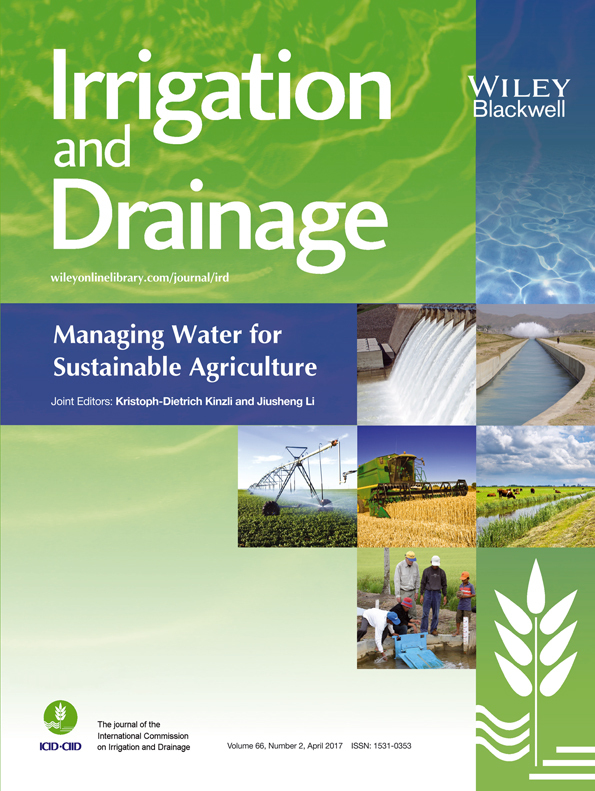Performance Evaluation of a Traveller Irrigation System†
Abstract
enA field evaluation study for a traveller irrigation system (TIS), which is a relatively new introduction for Indian conditions, was undertaken at the research farm of Chaudhary Charan Singh (CCS) Haryana Agricultural University, Hisar, India. The major objectives were to evaluate the hydraulic performance and to describe the operational aspects of a TIS under different travel speeds. The TIS, with a rated nozzle discharge of 18–26 m3 h−1, was operated at three travel speeds ranging from 25.4 to 82.9 m h−1. The depth of applied water and soil moisture were monitored on a regular grid over a 270 × 60 m area and characterized in terms of uniformity and distribution coefficients. As expected, the depth of irrigation water and soil moisture indicated an inverse relationship with the speed of travel. In contrast to a conical/triangular water distribution profile in a twin-nozzle medium-pressure fixed sprinkler system, the tested TIS leads to a trapezium/trapezoidal-shaped water distribution/precipitation profile. The uniformity and distribution coefficients as well as depth of water application were lower at the start and end sections as compared to the middle section of the total travel path of the TIS. A 20–30% overlapping between adjacent travel paths resulted in maximizing uniformity and distribution coefficients at different speeds. Copyright © 2016 John Wiley & Sons, Ltd.
Résumé
frUne étude d'évaluation sur le terrain pour le système d'irrigation de voyageurs (TIS), qui est une introduction relativement nouvelle pour les conditions de l'Inde, a été entreprise dans la ferme de recherche de Chaudhary Charan Singh (CCS) Université Agricole Haryana, Hisar, Inde. Les principaux objectifs étaient d'évaluer les performances hydrauliques et de décrire les aspects opérationnels d'un TIS dans les vitesses de déplacement différentes. Le TIS, avec une décharge de buse nominale de 18 à 26 m3 h−1, a été utilisé à des vitesses de déplacement 3 allant de 25.4 à 82.9 m h−1. La profondeur de l'eau et du sol appliqué l'humidité ont été suivis sur une grille régulière sur une m surface 270 × 60 m et caractérisé en termes d'uniformité et de distribution des coefficients. Comme prévu, la profondeur de l'eau d'irrigation et de l'humidité du sol a indiqué une relation inverse avec la vitesse de voyage. Contrairement à un profil triangulaire conique/de distribution d'eau dans un système d'arrosage fixe buse double de moyenne pression, le TIS testé conduit à un trapèze/forme trapézoïdale du profil de l'eau de distribution/précipitation. L'uniformité et les coefficients de distribution ainsi que la profondeur de l'application de l'eau ont été inférieurs à la section de début et de fin par rapport à la section médiane du chemin de voyage total de la TIS. A 20 à 30 pour cent de chevauchement entre les chemins de voyage adjacents a abouti à maximiser l'uniformité et de la distribution des coefficients à des vitesses différentes. Copyright © 2016 John Wiley & Sons, Ltd.




